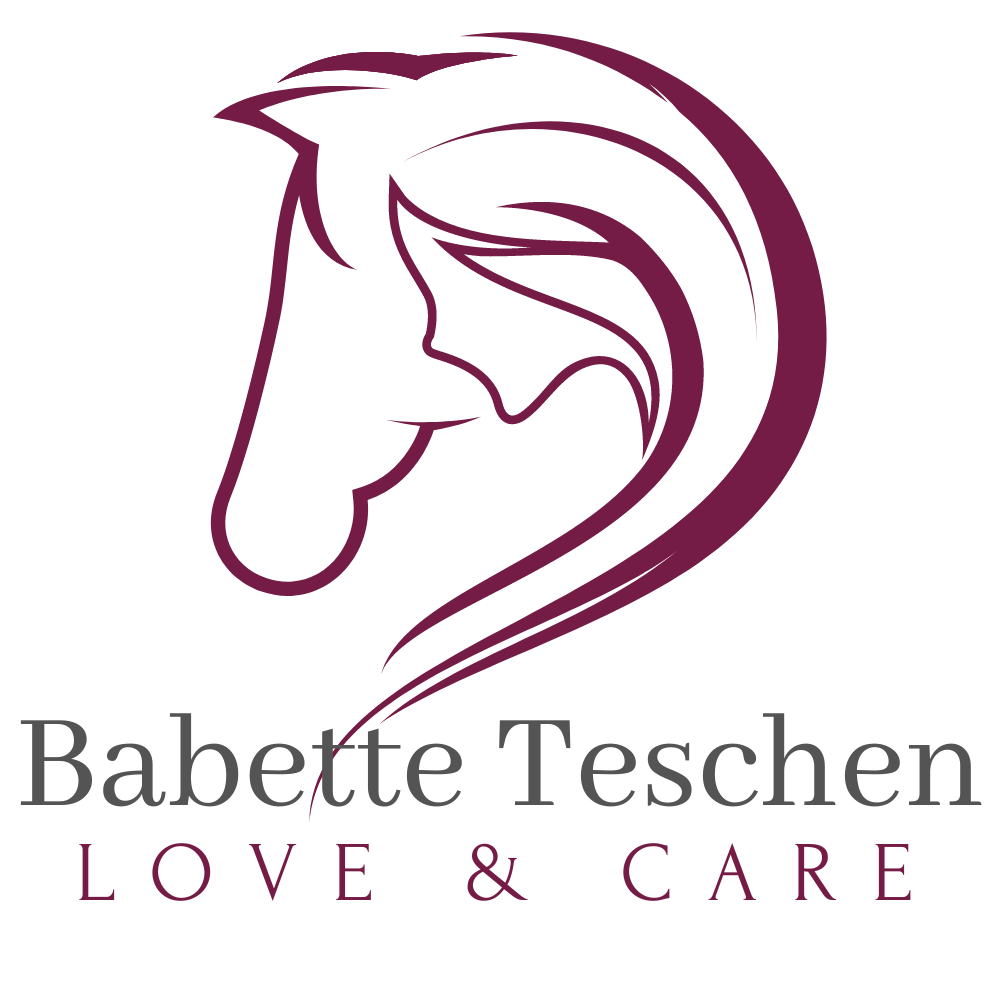Moving on a circle | How to lunge correctly?
by Babette Teschen
A good way of moving is an essential precondition for the horse to develop the necessary strength for carrying a rider. That is true for a young horse as well as a mature animal.
In order to be successful, we need to understand the difficulties our horse faces when we start training it. In the wild a horse essentially moves only in straight lines. He may turn abruptly or change direction, but he never moves continuously on a curve or even a circle.
So the horse simply does not know how to move on a circle in a naturally healthy way. We have to teach him exactly that.
We want to help our horse!

Without help, most horses move on the lunge in this manner: they land heavily on the inside foreleg, show no bend, and lean into the curve like a motorcycle. If they keep moving like this, tendons, ligaments, and joints will be strained.

You can easily see 6-year-old Losti’s “natural” way of moving in this photo. If we draw a vertical line (in green in this photo) it becomes apparent how tilted Losti’s legs are. As you can see, Losti’s legs show quite an angle to the vertical line. When a horse moves in this tilted position, the hoof cannot land flat, and so the joints are strained unequally.
When the horse falls like this onto the inner shoulder, the inside leg cannot swing wide forward. It supports the whole weight and the horse needs it quickly again for support in order not to fall down. The shortened movement in the forehand causes shortened steps in the hindquarters as well. The result is a stiff and hard gait.
Raising the inner shoulder is key for freeing the forward movement. Then the hindlegs can step under the center of gravity and the gait will become soft and flowing.
For a healthy way of moving without strain on joints, tendons, and ligaments the legs should support the body vertically. The hooves should hit the ground horizontally.

In this photo Losti’s chest points straight at the viewer. Even the tips of his hooves point straight forward and also a bit to the outside. However, he is moving on a circle and must turn to the left by twisting the inside leg on the ground. The leg joints are not designed for that. This rotation strains the joints, tendons, and ligaments and may lead to injuries.

Losti does not track on a circular line. He tracks on a straight line. The horse must track on a circular line for the hindquarters to carry and lift the back.
No flexion, no bend!

In order to bend correctly along the spine, the horse must flex at the poll in the same direction. As long as the horse flexes at the poll to the outside, it cannot bend the spine to the inside – you probably know the saying “No flexion, no bend”.

On top of that, Losti is counterflexed, shown in this photo by the red arrow.
Before attempting to master healthy movement on a circular line, the horse must be relaxed and supple, and happy to cooperate. The first thing to learn is to lift the inside shoulder… … so the legs support the body more vertically. Then he must accept correct flexion and bend, so he can track like a train on the circular line. Now the hindquarters can become active, begin to carry weight, and let the back swing upward. This healthy way of moving is an essential prerequisite for the development of correct muscling. Once those necessary muscles are developed, the horse can carry a rider without harm.
Once they have learned how to move well on the lunge, the horses will be supple and balanced in their shoulders. They bend their whole body, engage their hindquarters and show a positive tension through the topline. Their backs swing upward.
Good Progress with the Course in Lunging
Here we see the six-year-old Losti again. He has made good progress. After training with the Course in Lunging in just aight week, he is much more supple, he has better balance, he is beginning to bend and his back is swinging upward. Training this better and healthier way of moving on the lunge will contribute greatly to his physical and psychological well-being and development.

The horse must learn to raise the inner shoulder…

so he can place his legs more vertically under his body.

He must learn to flex and bend correctly …

so he can move like a train on tracks on a circle.

When the hind legs become active and supporting…

the back will swing upward.


